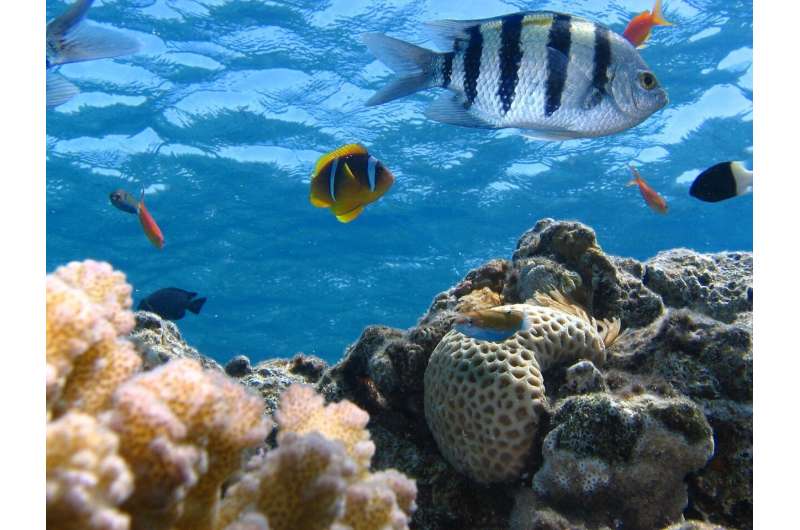This article has been reviewed according to Science X's editorial process and policies. Editors have highlighted the following attributes while ensuring the content's credibility:
fact-checked
trusted source
proofread
Toward a global scientific consensus: Identifying vulnerable marine ecosystems through imagery

The scientific community is taking a significant step toward establishing a consensus on the designation of Vulnerable Marine Ecosystems (VMEs) from imagery data, as highlighted in the new article titled "Towards a scientific community consensus on designating Vulnerable Marine Ecosystems from imagery," authored by Dr. Amy R. Baco and colleagues and published in PeerJ Life & Environment.
"Many scientists around the world were working independently on a similar question: Given the UN Food and Agriculture Organization (FAO) regulations for deep-sea Vulnerable Marine Ecosystems on the high seas, how can VMEs be identified from seafloor images?
"We recognized after many of our presentations at a conference that we were all working towards the same goal, and that working together would allow us to produce guidelines that could be used more consistently across regions. This publication represents the discussions of that large group of scientists and managers, and the first-level answers to how we would determine if an image showed a VME," said Dr. Baco.
Management of deep-sea fisheries in international waters demands the identification of areas containing VMEs, a critical task undertaken by Regional Fisheries Management Organizations/Arrangements (RFMO/As). Currently, fisheries data, including trawl and longline bycatch data, serve as the primary source for informing VME identification. However, the collection of such data can have negative ecological consequences, underscoring the urgent need for non-invasive alternatives for VME assessment and monitoring.
Imagery data from scientific surveys offer a promising solution, but until now, there has been no established framework for identifying VMEs from images. Dr. Baco, a Professor in the Department of Earth, Ocean and Atmospheric Sciences at Florida State University, spearheaded an international collaboration with the aim of determining existing VME assessment protocols and establishing preliminary global consensus guidelines for VME identification from images.
The study's initial assessment revealed a lack of consistency among RFMO/A regions in defining VME indicator taxa, resulting in variability in how VMEs are defined. In certain cases, experts concurred that a single image could identify a VME, particularly in areas with scleractinian reefs, dense octocoral gardens, multiple VME species' co-occurrence, and chemosynthetic ecosystems. The study introduces a practical decision flow chart for interpreting the FAO criteria for single images.
To further evaluate density-related aspects of the flow chart, data were compiled to assess regional perceptions of density thresholds. The findings indicated that there is the potential to develop consistent thresholds across regions based on expert consensus because there was a statistically significant difference in the mean of the values for what was considered "yes a VME" or "no not a VME."
But significant variation occurs in densities of different species, so the same thresholds will not work across all taxa. Work is ongoing to develop an areal extent index, incorporate a measure of confidence, and deepen understanding of density and diversity levels correlating with key ecosystem functions for VME indicator taxa.
- Based on these results, the study proposes several important recommendations.
- Establish a global consensus on which taxa should serve as VME indicators.
- Encourage RFMO/As to adopt guidelines that incorporate imagery surveys as an alternative or complement to bycatch and trawl surveys for VME designation.
- Include imagery surveys in Impact Assessments for both fisheries and also for other industries that impact the seafloor.
The research not only advances our understanding of VME identification but also underscores the importance of sustainable deep-sea management practices. The development of standardized guidelines for VME assessment from imagery will contribute significantly to the preservation of vulnerable marine ecosystems in international waters.
More information: Amy R. Baco et al, Towards a scientific community consensus on designating Vulnerable Marine Ecosystems from imagery, PeerJ Life & Environment (2023). DOI: 10.7717/peerj.16024
Provided by PeerJ


















